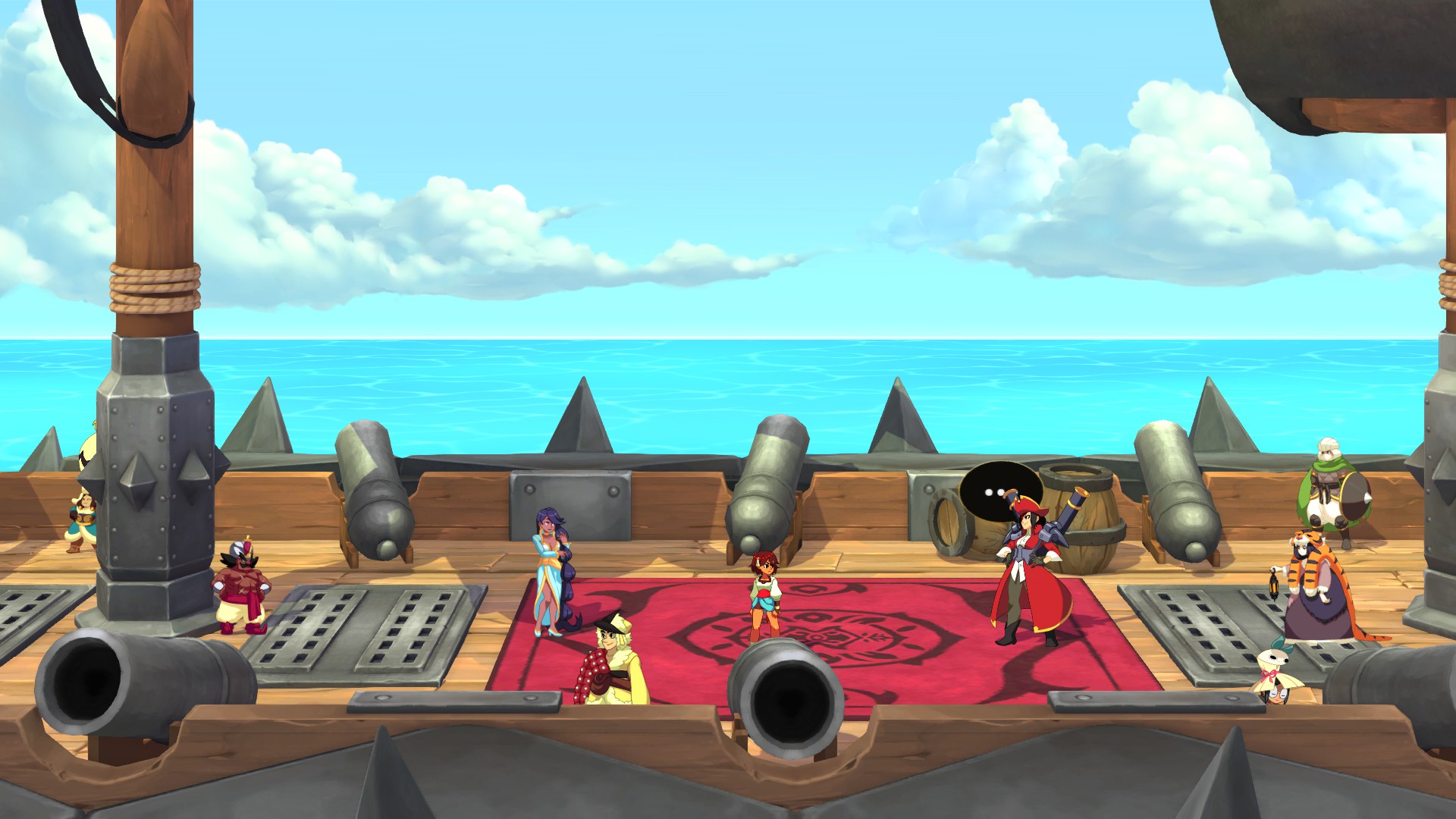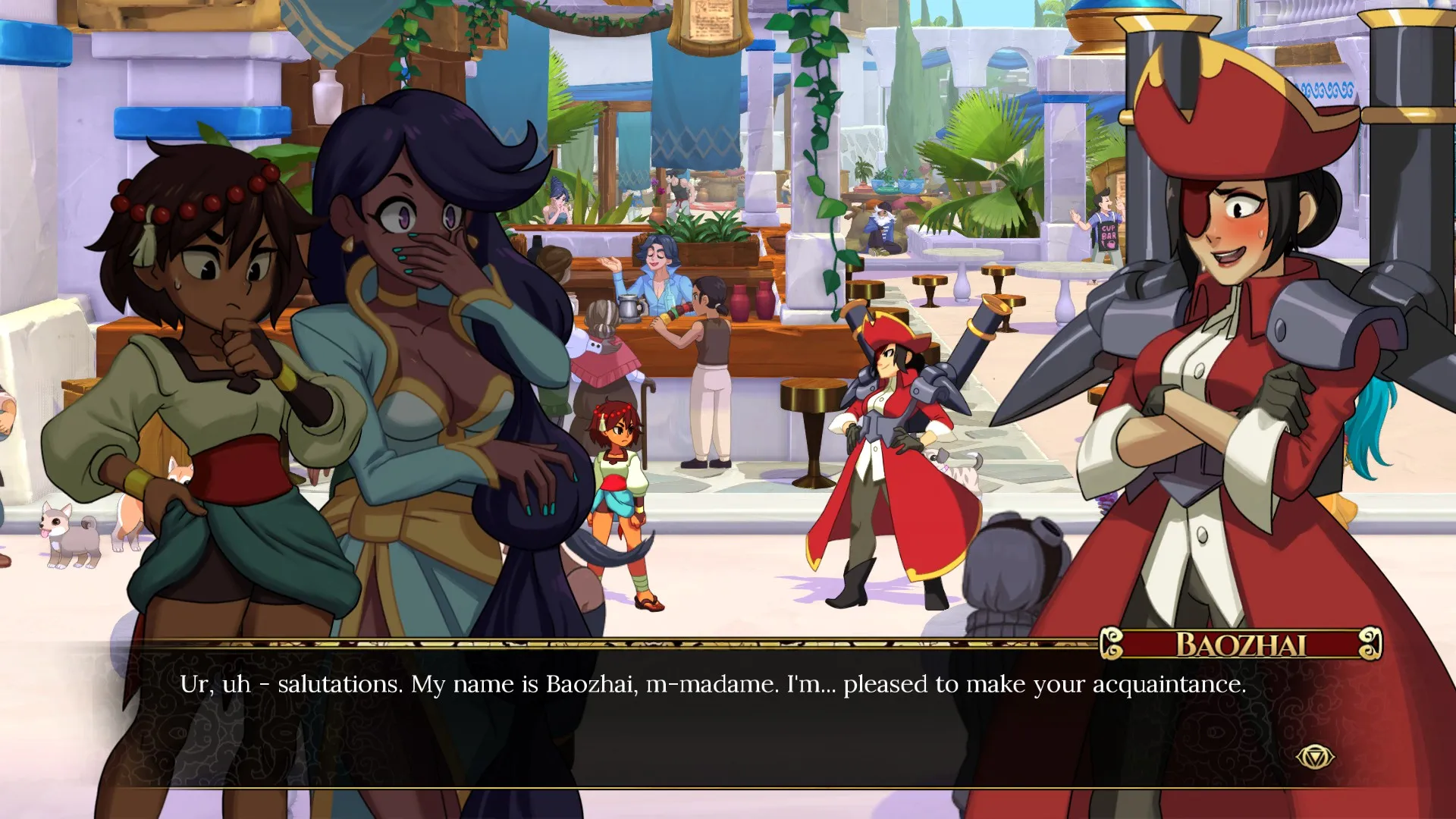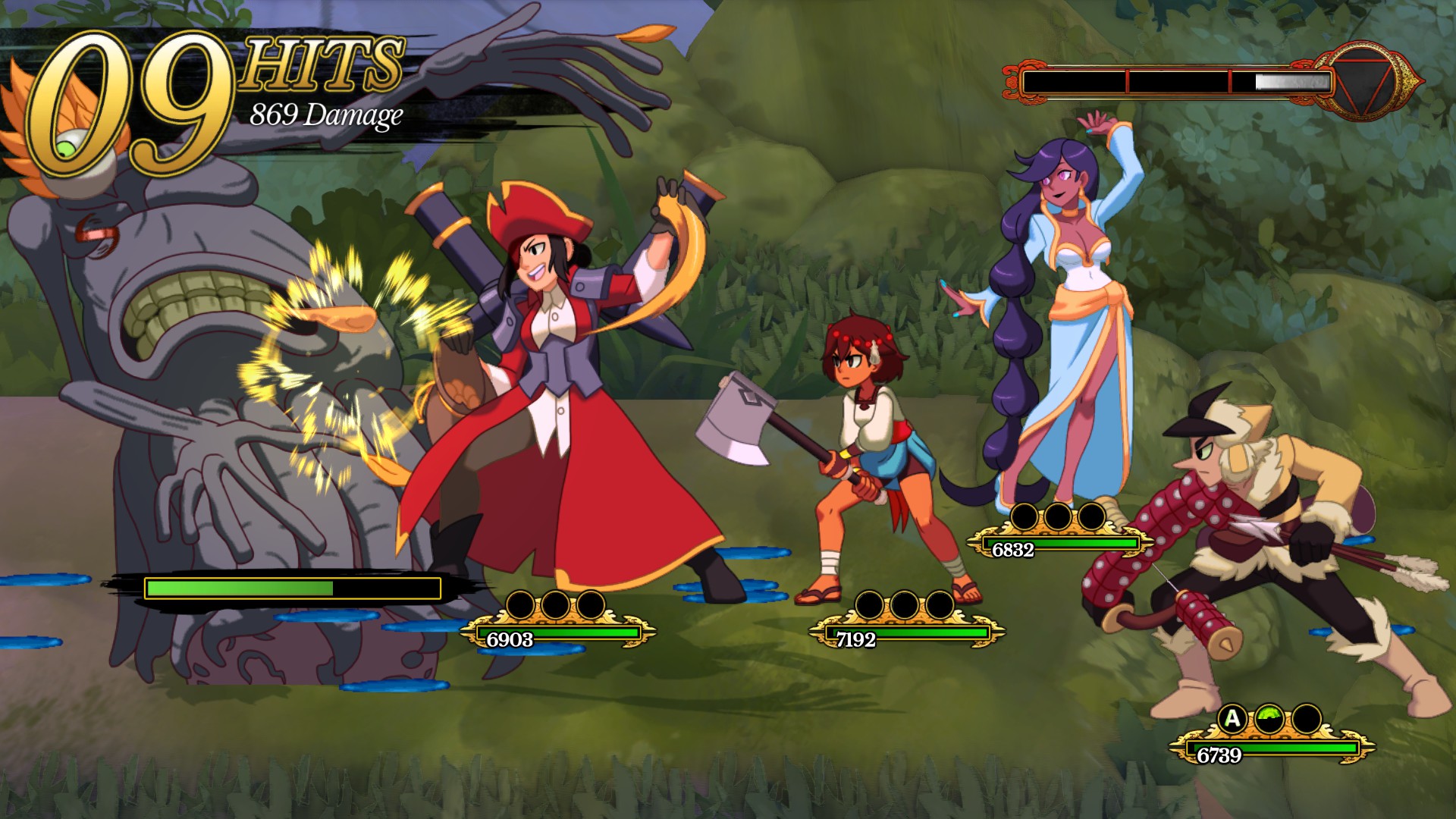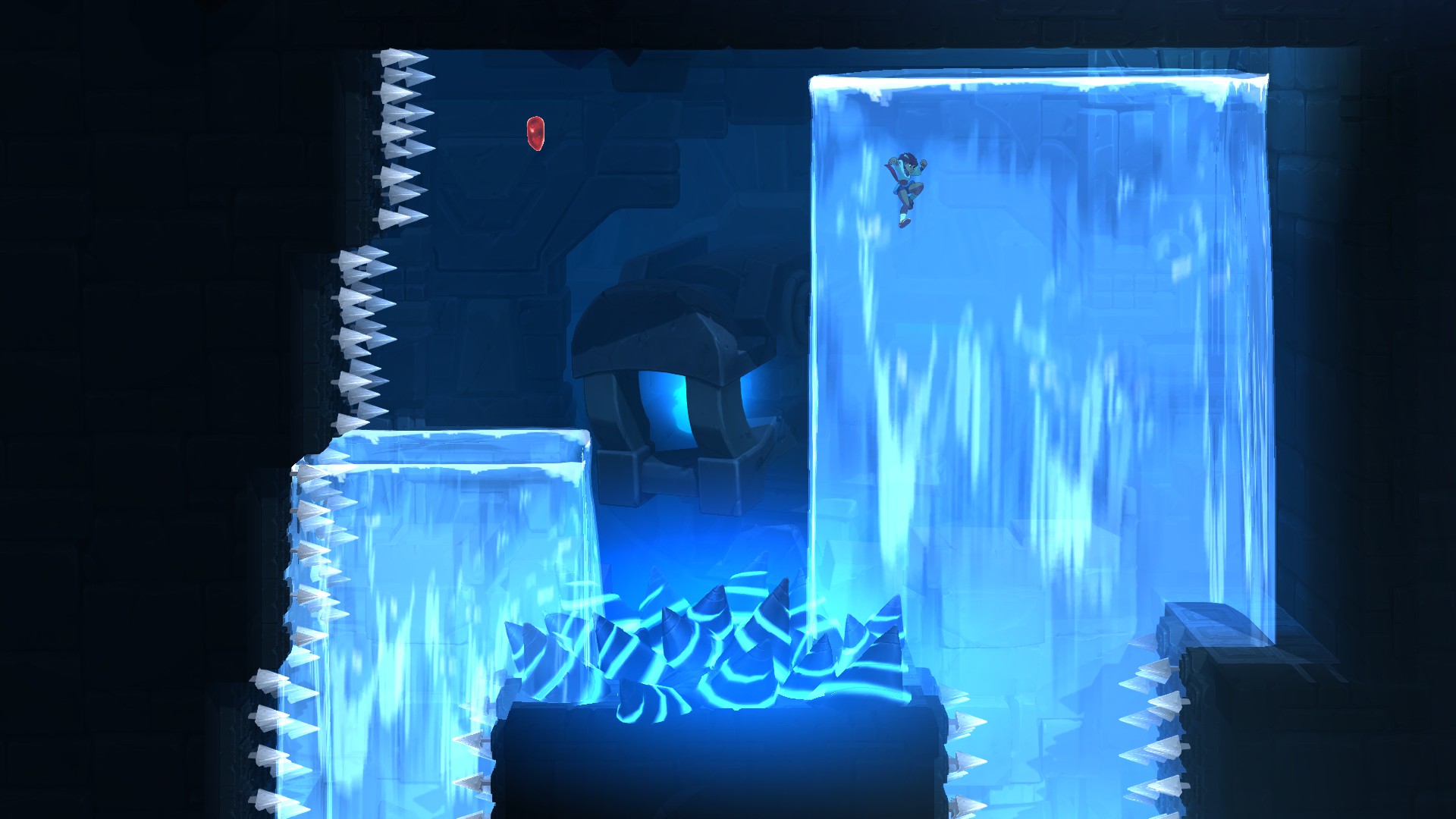Lab Zero Games, the studio behind Skullgirls, first showcased Invisible back in 2015. It was presented as an ambitious platform adventure game featuring a young girl called Ajna.
Back then, we witnessed what sets her on a path of vengeance and honor, and how the power inside her makes her part of something much bigger. While the final product seems like it wants to be a handful of different games at once, it all comes together somehow, overcoming the few hurdles it puts in its own path along the way.
As I plunged through the game working on this review, fighting my way through jungles, industrialized cities, and a water temple that’s not too bad, I quickly discovered Indivisible‘s primary focus is on the importance of character.
Ajna comes across so many characters during her journey, many of whom eventually become eligible party members. Most of them are tied to the story, but a few others are only found if you explore certain parts of the map. Some are easy to find, while others are hidden in the wilds of the world; easily missable, some characters are well worth seeking out.
They all gather in what’s best described as Ajna’s inner realm. This realm serves as a hub you can visit at any time by meditating. Here, you can talk to characters briefly, and over time, some will offer you aid or guidance, either in exchange for items or through conversations.
Indivisible Review: Shaking Up the Standard
Consequently, Indivisible is one of the most diverse games on the market. Characters come from all sorts of cultures and have diverse personalities. This assortment, and how well most of them have been developed, is the highlight of the game.
With great voice acting from Matt Mercer, Tania Gudani, Amjali Bhiman, and many others, conversations, which are displayed in a traditional RPG format, are fun to witness and full of wit. I rarely skipped these dialog-heavy scenes, and I think that says a lot in a world full of distraction and the constant urge to “get to the next game.”
From a gameplay perspective, Indivisible is essentially a platformer with RPG and fighting game elements, but there are metroidvania-esque influences sprinkled in for good measure. Once a certain event happens in the story, a world map opens up, allowing you to visit towns in whichever order you prefer. This sounds great at first, but that’s until you inevitably stumble upon a section that needs a certain power or tool in order to progress.
Going back and forth wouldn’t be too much of a pain if fast travel were involved, letting you go from the beginning of a level to another portion. Enemies seem to respawn, or at least re-stock, in certain sections, and unless you manage to jump across them in the platforming elements, it’s likely that you’ll have to fight them again and again.
After a key point in the story, you will need that respawn for certain puzzles, but don’t expect to something similar to Dark Souls: grinding is almost non-existing here. Totems, which are scattered throughout maps let you save your game, but they don’t let you warp between them.
From an RPG point of view, Indivisible isn’t exceedingly complex. Both Ajna and the rest of the characters level up simultaneously, adding increased defense, more charges to the energy bar, and more attacks for each during battle segments.
This is all managed by collecting and exchanging cores with an NPC in your inner realm, and that’s about it. There’s no inventory screen, and there are no loadouts aside from the party screen. It’s refreshing considering how many games get tangled in multiple systems at once without getting anywhere, but it’s not as involved as some might expect.
Combat plays out as a hybrid between real-time and instanced. As such, there aren’t random encounters during the platforming and exploration segments. Instead, you can see enemies coming, though that doesn’t mean you can always avoid them.
In this way, the first one to hit the other initiates combat (although you get a nice bonus if, along with the first strike, you also block an incoming punch and counter-attack it). Once combat begins, things start to look a bit different.
Each character is attached to a specific button. Attacks vary depending on where you move the analog stick (or WASD), and there’s a shared energy bar for the party that involves blocking and performing special attacks. Stack a few “charges”, and those attacks become even more powerful.
Interestingly, combat is a mixture of real-time strategy and a fighting game. It’s easy to think that smashing buttons will get you through fights, but enemies have a large health pool, and that’s not always the best strategy.
Once you use all the attacks for each party member, you actually have to stop for a few seconds and wait for them to replenish. Both enemies and your party have a window to attack in this moment, and that’s basically how each “turn” happens. If you have enough energy, you can just keep hitting them until it replenishes completely. If you’ve played Valkyrie Profile before, you might sense a familiarity here.
As long as you’re inflicting damage, enemies won’t be able to attack. Some carry armor or use defense buffs, but that’s easily countered by performing two consecutive attacks using “Up” and “Down”. Aside from that, you can only defend yourself by blocking, which is performed by the same button attached to a character.
If you perform a perfect block, you’ll receive even less damage. It creates an interesting rhythm, but even if enemy designs are some of the most imaginative I’ve seen in a while, battles become a chore due to their strange pacing.
The problem compounds when you consider that battles take an eternity to play out. This is okay for boss battles since they have different phases that keep the combat interesting, but it doesn’t work as well for mobs. I don’t want to spend five minutes fighting rats, or that same enemy that keeps respawning for some reason as I’m backtracking to open a passage or use a new ability.
Indivisible Review — The Bottom Line
Pros:
- Visuals and animations are outstanding
- Diverse, funny, and interesting characters
- A new combat system
- Tight platforming
Cons:
- Combats are longer than they should at times
- Backtracking is a pain
Indivisible is a gorgeous game all around. Screenshots and videos don’t do it enough justice, and seeing it in motion is immediately impactful. Even if the settings are fairly common, there’s a personal touch wherever you look.
I don’t mind that it doesn’t go hard on the RPG aspect, either; I’ve got tons of other games from the genre waiting for me in my backlog. It feels like a self-contained experience, and there’s nothing wrong with that.
Despite lacking some quality of life improvements that we’ve grown used to in the sub-genres it’s based on, as well as the absence of a few balance patches here and there, Indivisible is well worth the wait, and I will cherish the characters I’ve met in this journey for years to come.
[Note: A copy of Indivisible was provided by Lab Zero Games for the purpose of this review.]










Published: Oct 4, 2019 10:07 pm